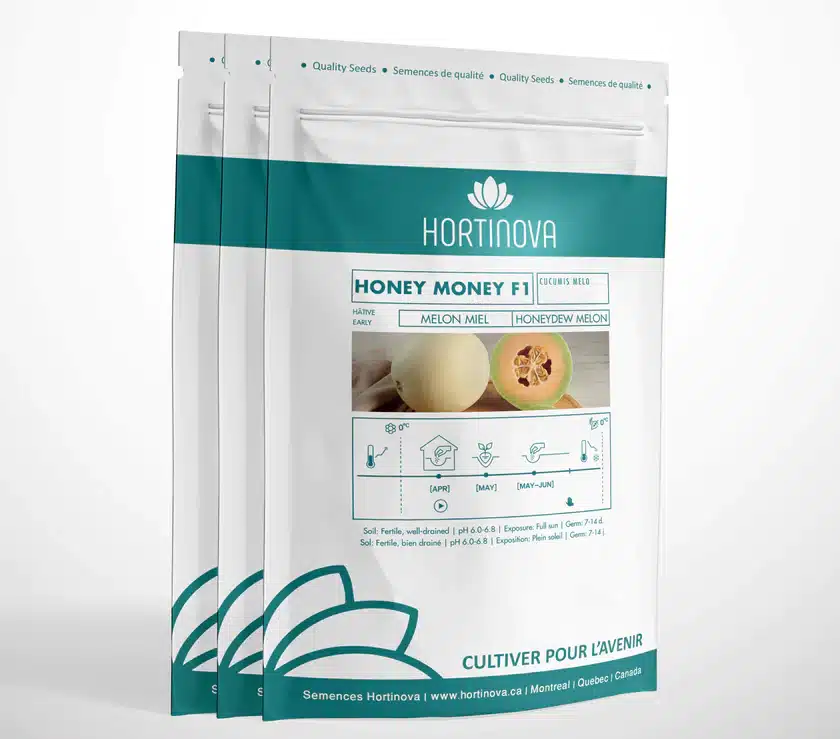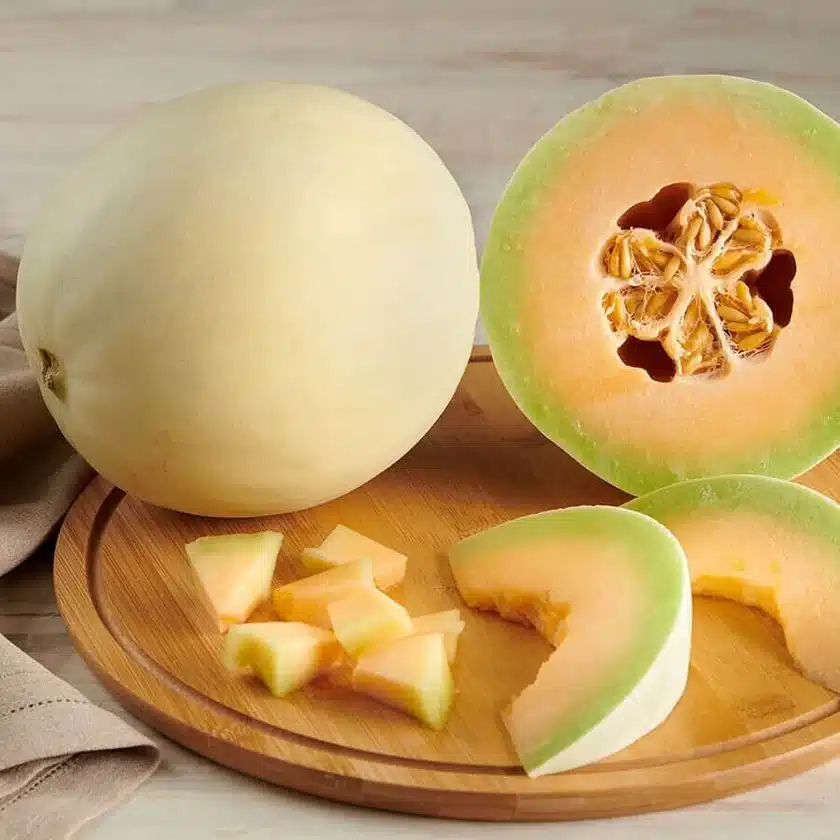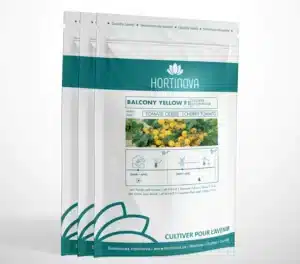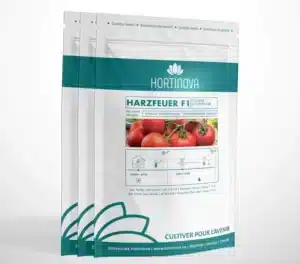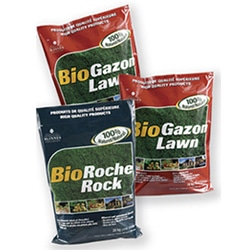Natural, untreated and GMO-free seeds. Hybrid seeds.
For an early, reliable crop, sow seeds indoors just after the last spring frost. Sow 2 to 3 seeds in a 10 cm pot and thin down to the strongest seed when the vines reach 10 to 12 cm in height. The soil must be warm for good germination 70°F (21°C). Cool soil will cause the seed to rot. In warmer climates, you can directly sow seeds outdoors as soon as soil temperatures warm in early summer.
WATER: Watering is key. As plants grow, flower and fruit, they need about 2 inches of water per square foot (about 1.5 gallons) per week. Water in the morning and try to avoid getting the leaves wet, as wet foliage encourages fungal and other diseases. If possible, use drip irrigation to keep plants watered consistently and evenly. Hot, dry weather produces the sweetest melons. If you had an exceptional amount of rain during the ripening phase, this can cause bland fruit.
FEED: To encourage strong growth, mix 4 to 6 inches of composted manure into your melon beds before planting. Then add a balanced organic fertilizer (such as a blood meal/bone meal mixture) every 3 to 4 weeks. Avoid fertilizers high in nitrogen, as too much nitrogen can lead to lots of foliage and fewer fruits.
PROTECT: Row covers are a good way to keep pests like squash bugs and vine borers at bay. Mulching the planting site with black plastic will serve several purposes: it will warm the soil before planting, prevent weed growth, and keep the developing fruit clean.
PRUNING: When opting for larger melons, the plants can be pruned. Melons produce a primary stem with numerous secondary or side branches. When pruning melon plants, the idea is to retain the primary vine, remove the first side branch, and reduce the size of any additional side branches. Using pruning shears, cut back the lateral vines growing from the primary node to the eighth leaf node.
When the skin begins to turn from green to yellow, the melon is usually ripe enough to pick. However, be careful not to pick too early. Look for a crack in the stem where it attaches to the fruit, this is also a sign of maturity. The fruit should be easy to separate from the vine, but if it falls off on its own, it is usually overripe.

